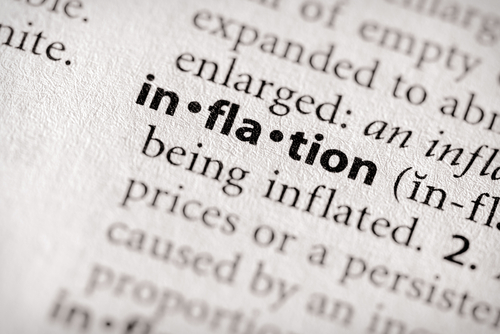
Cross-posted from Henry Thornton A.K.A Peter Jonson, former head of research at the Reserve Bank of Australia.
The quality press in Australia is saying that a deal will soon be made to fix the US budget impasse, even if this is just a band aid fix over what is best seen as an oozing, toxic fiscal mess.
The media, like market participents, has largely been saying the mess must be fixed because not fixing it would be ‘unthinkable’. ‘Logic must eventually prevail’ is the line of thinking.
But even if the bandaid is applied and we all go back to enjoying the zero interest rate/quantitative easing fuelled asset boom, how does the US fiscal mess get fixed in the longer term? This was the question fired at Henry by his visitor from Sydney yesterday.
There are only three ways to fix a fiscal mess of the size the USA has accumulated. The underlying cause is spending in excess of tax receipts, a policy that Ronald Reagan got away with for some time. Read Alan Moran’s analysis of that historic policy, as told by Mr Reagan’s budget director, David Stockman, courtesy Quadrant.
Stockman ‘sees near-unresolvable economic problems, the cause of which he lays squarely at the door of successive governments with their extravagances, bad spending decisions, budget deficits, and artificially low interest-rate settings that have brought excessive investment in housing, savings disincentives and potential inflation. These are aggravated by what he sees as an undermining of the capitalist structure caused by owners’ agents, management, looting of company profits through financial engineering and by recent government bailouts of poorly managed firms.
‘Stockman blames the present endemic US current economic crisis on politicians’ spending programs and loose monetary policy. The adverse effects of these have been growing like a cancer for almost eighty years, reaching a crescendo with the Global Financial Crisis (GFC) of 2008 and an aftermath that continues to plague the world economy’.
Policy one to fix the fiscal mess is to reverse America’s ‘extravagances, bad spending decisions, budget deficits, and artificially low interest-rate settings’. But the US legislators are finding it hard even to agree on a temporary rise in the limit on allowable borrowing by the US government, despite the possibility that the USA will have to default on its debt repayments, unleashing a global crisis that will make the failure of Lehman Bros look like a teddy bears’ picnic.
Put a line through policy one.
Policy two is to repudiate the debt. The mighty USA act like a failed entrepreneur and abandon its commitment to the rule of law? To be sure, the US corporate culture (and corporate law) allows failed business leaders to become bankrupt and start again, sometimes to fail again but occasionally to succeed beyond their wildest dreams. ‘It works for American business failures, why not the US government’ will be the cry of the Tea Party Republicans.
Global interest rates would leap, central banks would strive mightily to provide liquidity, but trust, that vital but often unstated pillar of global capitalism, would be smashed. Massive disruption of business, trade and capital flows would result.
For goodness sake, US Tea Partiers, put a line through policy two.
This leaves policy three – massive global inflation. As already noted, massive monetary stimulus would be applied under scenario two, but even if the bandaid is applied successfully, this is the likely scenario when policy one – fix the underlying fiscal problem – fails.
Historically, some nations have succeeded with policy one – Australia in the 1980s (but the crisis came anyway, in 1991, Germany more than once, but only after terrible hyperinflation that wiped out both government debt and the savings of the middle classes, the UK up to a point regularly, with help from the international agencies.
But history says debt default or inflation, or some horrible mix of the two, is the usual solution to a proper fiscal mess. Tea Partiers say, explicitly or implicitly, ‘bring it on’ as they say only a proper crisis will get Americans to live within their means.
Countries that have defaulted, eg Argentina, are often allowed to borrow again, too soon for the proper messages to be absorbed in Henry’s view. ‘So USA will again be able to raise new debt before long’ say the Tea Partiers, but Henry questions this view. If USA and therefore the world is plunged into depression, borders will close, capital flows and most trade will dry up, and radical politicians of all stripes will battle for ascendcy.
At this Henry explained to his visitor that the implied China-USA economic compact was an economic version of the MAD (‘Mutually Assured Destruction’) balance of terror that governed US-Soviat relations during the cold war. China lends to the USA so that Americans can spend on Chinese imports. A US debt default would put a spoke in that wheel whose long-term effects would destroy world trade just a certainly as a nuclear strike would have flattened major cities if the cold War had hotted up.
By all means enjoy the equity boom that will go on if and when the bandaid is applied to the oozing, toxic fiscal mess in the USA. But consider what you will do to protect your family’s wealth and welfare when plan one fails and some mix of plans B & C is applied to the US economy.

